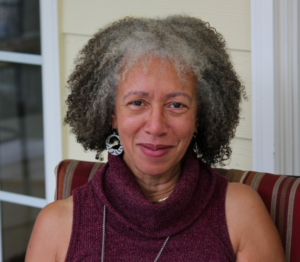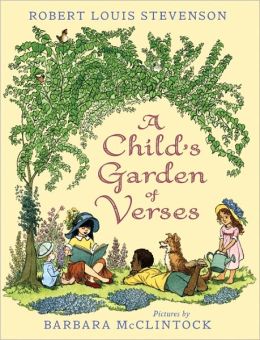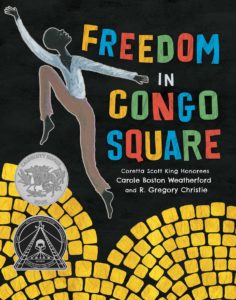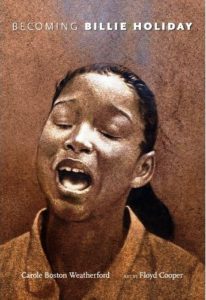 This month’s Author Interview is with NC-based writer Carole Boston Weatherford. She’s been on my short list for some time, and when I saw that she and OPB pal Rob Sanders were co-teaching a workshop on nonfiction at a regional SCBWI conference, I signed up. The day after that workshop, I moved her to the top of the Must-Have list.
This month’s Author Interview is with NC-based writer Carole Boston Weatherford. She’s been on my short list for some time, and when I saw that she and OPB pal Rob Sanders were co-teaching a workshop on nonfiction at a regional SCBWI conference, I signed up. The day after that workshop, I moved her to the top of the Must-Have list.
Here’s a quickie bio that’ll give you a sense of why that happened.
Born in Baltimore, Maryland, Carole went on to earn a BA from American University, an MA from the University of Baltimore, and an MFA from the University of North Carolina at Greensboro. Her 50+ books have won two NAACP Image Awards, a Coretta Scott King Award, three Caldecott Honors, an SCBWI Golden Kite Award, the Lee Bennett Hopkins Poetry Award, and many, many more. Somehow, she still finds the time to also serve as Professor of English at Fayetteville State University in North Carolina as well as be a frequent participant at writing conferences.
Are you starting to see why she’s an OPB must-have?
Let’s dive right in!
website: www.cbweatherford.com
GoodReads: www.goodreads.com/author/show/57825.Carole_Boston_Weatherford
Twitter: www.twitter.com/poetweatherford
RVC: You’ve said that books have been a part of your life for as long as you can remember. What were some of the early biggest influences?

RVC: Some people come later in life to poetry, but not you. You heard its lyric call in first grade, right?
CBW: A poem came to me out of the blue and I recited it for my mother on the drive home from school. She parked the car and wrote it down. A couple years later, she asked my father, a high school printing teacher, to have his students print my poems on the letterpress in his classroom. So, at an early age before the computer age, I saw my work in print. That gave me the audacity years later to think that I could become a published author.
RVC: What poetic technique should more prospective picture book writers work on to make their text more effective?
CBW: Picture book writers can employ poetic techniques such as aural qualities, distilled emotions, concrete imagery, economy of language, and rhythm to make their manuscripts sing.
RVC: How do you decide which poetic style/approach will work for a piece? Perhaps you might offer a book example or two by way of explanation?
 CBW: The style and approach need to feel right for the project. Will the manuscript be free verse or rhymed couplets; from first, second, or third person point of view; a book length poem or a narrative sequence? For You Can Fly: The Tuskegee Airmen, I chose second person to put readers in the cockpit with the pioneering World War II aviators. For Voice of Freedom: Fannie Lou Hamer, Spirit of the Civil Rights Movement, I chose first person so young readers could hear the voice of Ms. Hamer, a powerful orator and singer. For Before John Was a Jazz Giant: A Song of John Coltrane, I used repetition to riff about the saxophonist’s childhood. Jazz Baby and The Sound that Jazz Makes were both inspired by nursery rhymes.
CBW: The style and approach need to feel right for the project. Will the manuscript be free verse or rhymed couplets; from first, second, or third person point of view; a book length poem or a narrative sequence? For You Can Fly: The Tuskegee Airmen, I chose second person to put readers in the cockpit with the pioneering World War II aviators. For Voice of Freedom: Fannie Lou Hamer, Spirit of the Civil Rights Movement, I chose first person so young readers could hear the voice of Ms. Hamer, a powerful orator and singer. For Before John Was a Jazz Giant: A Song of John Coltrane, I used repetition to riff about the saxophonist’s childhood. Jazz Baby and The Sound that Jazz Makes were both inspired by nursery rhymes.
RVC: So you’re a prolific writer. How do you balance your writing life with your non-writing life? What goes into your process of choosing which projects to take on?
CBW: Balancing literary, academic, and family duties is a juggling act. Balls sometimes drop. My literary mission is to mine the past for family stories, fading traditions, and forgotten struggles. The projects I take on advance that mission. Often, I am rescuing a subject from obscurity or am setting the record straight. Time is precious and finite. Thus, I need to be keenly interested in a subject because I never know how much research will be involved or how long the writing process will take. Likewise, I never know how long it will take to sell a manuscript.
RVC: Talk a bit about the CBW/JBW mother/son author/illustrator duo.
CBW: My son, Jeffery Weatherford, showed artistic ability at an early age so I put him in studio art classes outside of school. He went on to get a degree in digital design and an MFA in painting. You Can Fly: The Tuskegee Airmen gave me a chance to work with him as an illustrator.
I did some picture research for him and suggested that he create scratchboard drawings. But he did not show me every drawing upon completion. When I saw the illustrations, I was so proud. We’re working on a few collaborations now.
Jeffery is also a performance poet, and we’re working together on a hip hop novel.
RVC: How important is a critique group for a prospective picture book author?
CBW: A critique group can be crucial to an emerging writer. My critique group midwifed some of my early manuscripts, including The Sound that Jazz Makes, my first book to win a national award.
 RVC: One of my favorite books of yours is Freedom in Congo Square. As a lifelong musician, I’m really drawn to that book’s connection to the musical communities of New Orleans, but I’m equally taken by the chant-like rhymes that feel so rooted in the structure of music. And who doesn’t love the folk-art style used by R. Gregory Christie, too, right?
RVC: One of my favorite books of yours is Freedom in Congo Square. As a lifelong musician, I’m really drawn to that book’s connection to the musical communities of New Orleans, but I’m equally taken by the chant-like rhymes that feel so rooted in the structure of music. And who doesn’t love the folk-art style used by R. Gregory Christie, too, right?
CBW: Freedom in Congo Square was our third collaboration. When I first saw Greg’s illustrations for the book, I emailed him and said: “This is it for you. I don’t know what ‘it’ is, but remember that you heard it here first.” The book went on to win a Caldecott Honor.
RVC: So many of your books come hand-in-hand with an amazing origin story. What’s your favorite, and why?
 CBW: Billie Holiday has been my muse since before I even realized I had one. But I almost didn’t write Becoming Billie Holiday for fear that young readers wouldn’t be familiar with her. Then, I was touring the Great Blacks in Wax Museum in my hometown of Baltimore. I was admiring the wax figures of musicians when a girl walked up and said, “Oooo, Billie Holiday.” I asked the girl what grade she was in and she indicated, “Eighth grade.” Then, I asked, “You’ve heard of Billie Holiday?” She replied, “Yeah, she could sing!”
CBW: Billie Holiday has been my muse since before I even realized I had one. But I almost didn’t write Becoming Billie Holiday for fear that young readers wouldn’t be familiar with her. Then, I was touring the Great Blacks in Wax Museum in my hometown of Baltimore. I was admiring the wax figures of musicians when a girl walked up and said, “Oooo, Billie Holiday.” I asked the girl what grade she was in and she indicated, “Eighth grade.” Then, I asked, “You’ve heard of Billie Holiday?” She replied, “Yeah, she could sing!”
When the girl moved on, I looked Billie’s wax figure in the eyes. She gazed back at me. It was almost as if she said, “I told you to write my book.” So, I got busy on what would become my YA debut.
RVC: Please say a few words about the state of multicultural literature in the kidlit world. And if you’d like to include a Call to Action, that’d be most welcome!
CBW: The first wave—actually ripple–of multiculturalism was in the 1960s and 1970s after the publication of Ezra Jack Keats’ A Snowy Day. In the early 90s, I was a new mother. Trips to bookstores and libraries with my children introduced me to a new crop of multicultural books. At the time, I was in an MFA program and was writing poetry for adults. I did some research about writing for children and realized that the industry was undergoing a multicultural boom. So, I entered the children’s book industry in 1995 during the second wave of multiculturalism. We are now experiencing the third wave. The term “multicultural” has been replaced by the word “diverse.” And in some cases, writers of color are being replaced by white writers who take on subject matter outside of their culture.
While We Need Diverse Books has raised awareness and created opportunities, the Own Voices movement has raised cultural sensitivity issues too complex to discuss here. For the sake of future generations, we must continue to grow the body of books by and about people from marginalized cultures and the opportunities for non-whites inside the industry.
RVC: We’re to the final questions now, which means we’ve reached the SPEED ROUND! Zoomy-fast answers, please. Ready?
CBW: Ready!
RVC: Most underappreciated living rap artist?
CBW: Noname. (Really! Love her.)
RVC: If you had to choose a career outside of the literary world, what would it be?
CBW: Fashion designer, filmmaker, or rapper.
RVC: What’s the most writerly type of pizza?
CBW: A pizza of my mind. Seriously though, I don’t eat pizza because my diet is primarily plant-based. Pizza without cheese doesn’t interest me.
RVC: Since you co-taught that SCBWI workshop together… what’s your favorite Rob Sanders picture book?
 CBW: Peaceful Fights for Equal Rights.
CBW: Peaceful Fights for Equal Rights.
RVC: Three words you hope every reader says/uses when they read one of your books?
CBW: That really happened?!
RVC: We started this interview by talking about books that influenced you, so let’s end with the names of three of your writing heroes.
CBW: Toni Morrison. Langston Hughes. Marilyn Nelson.
RVC: Thanks so very much, Carole!

